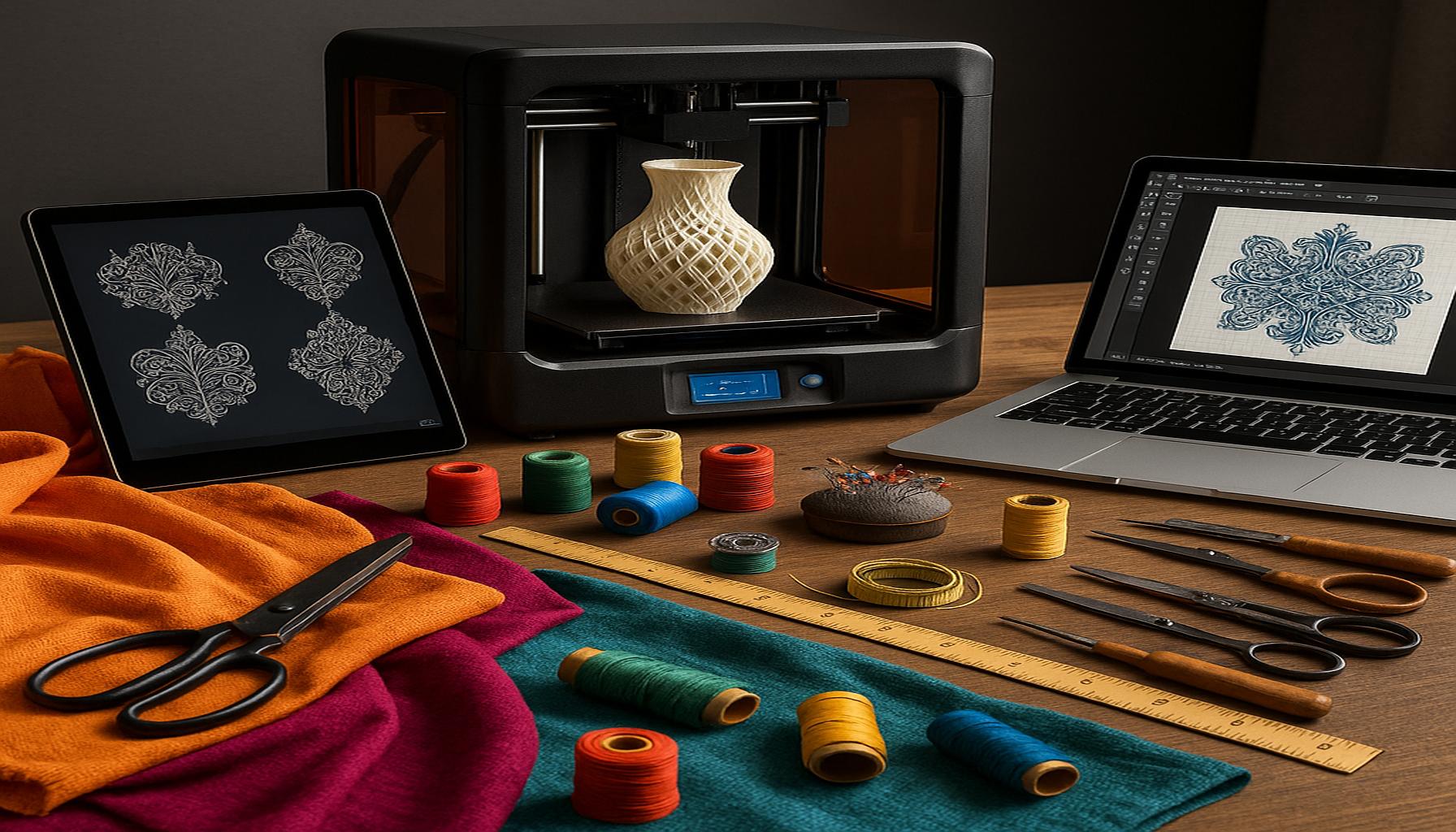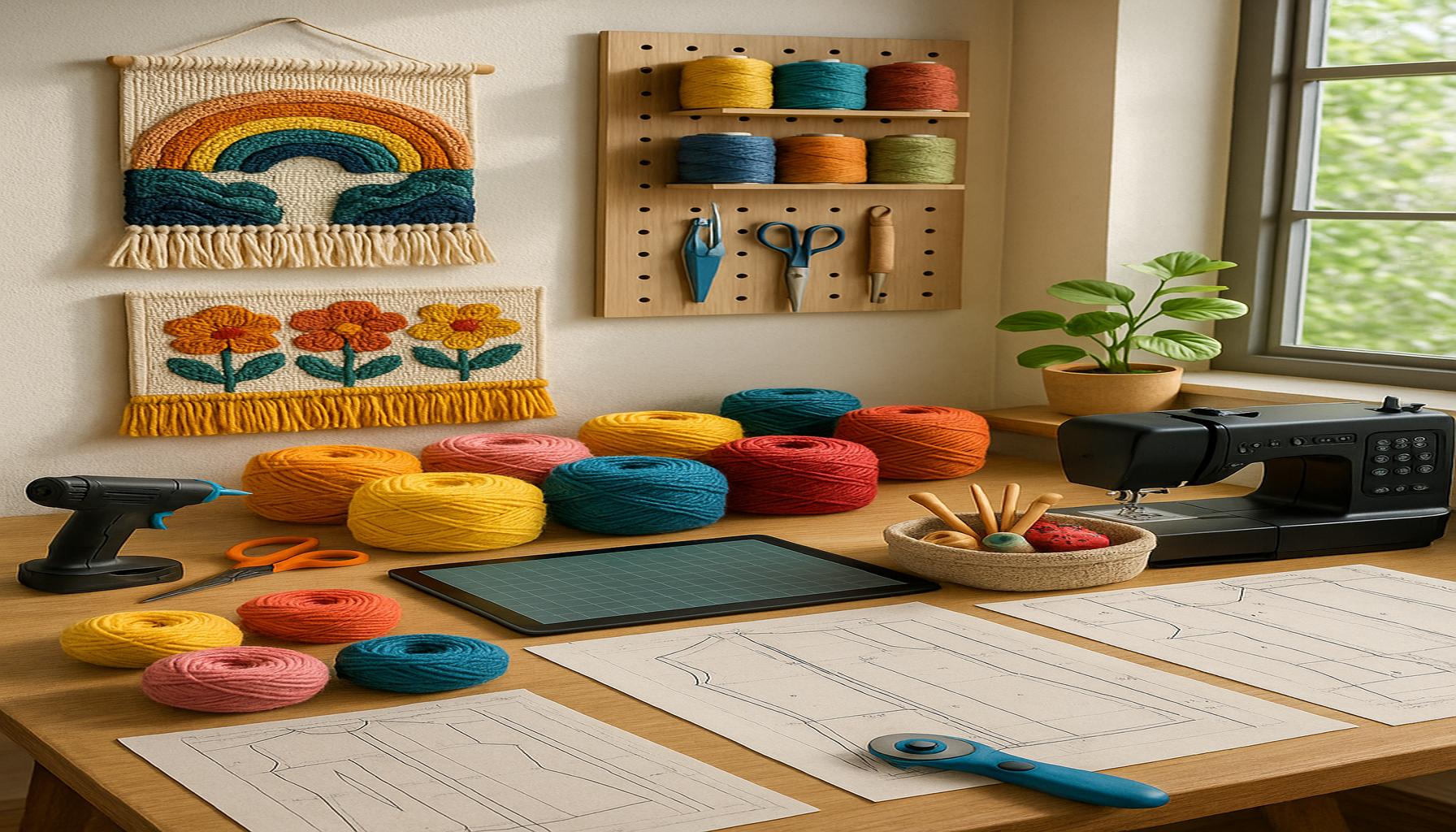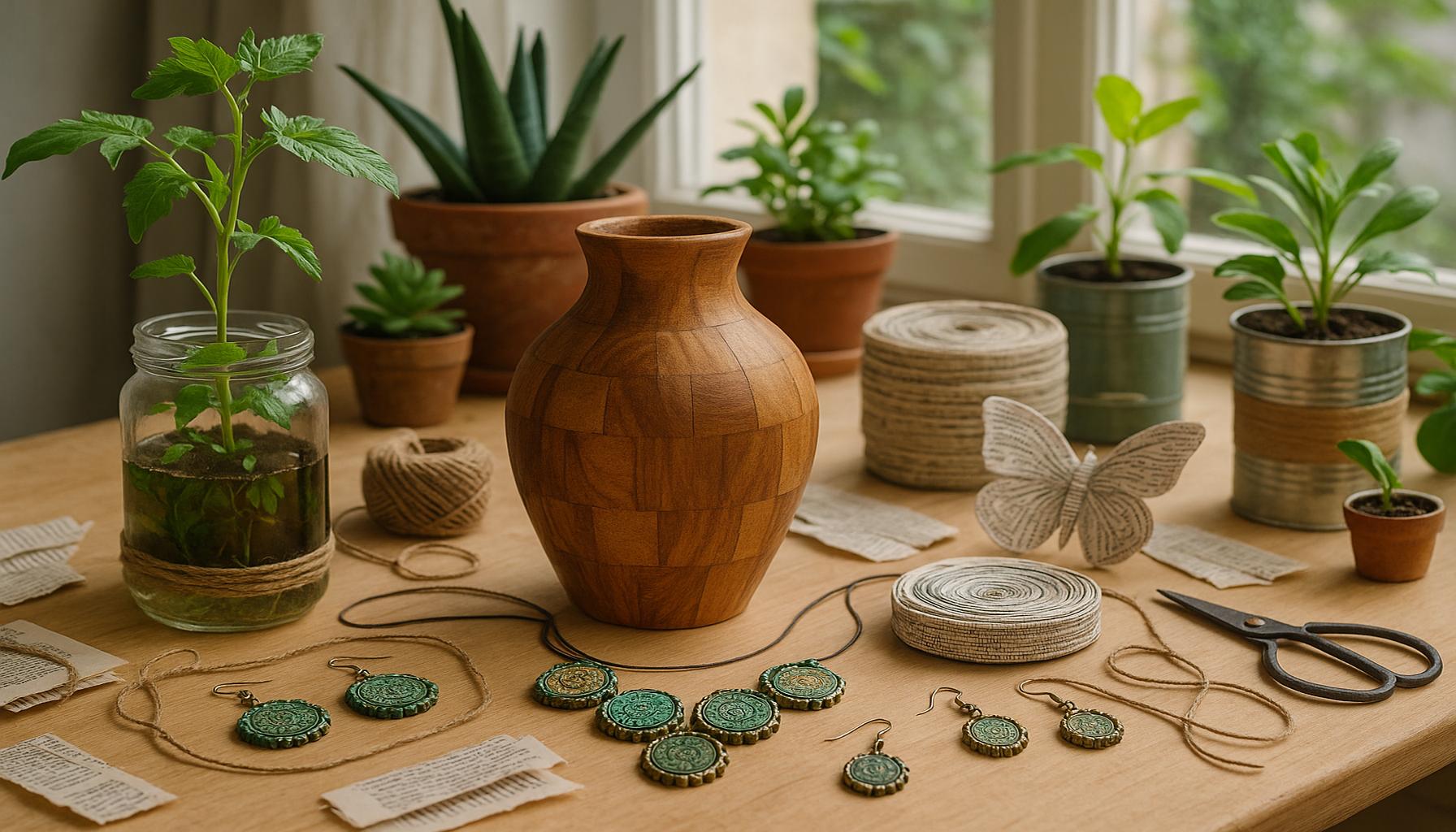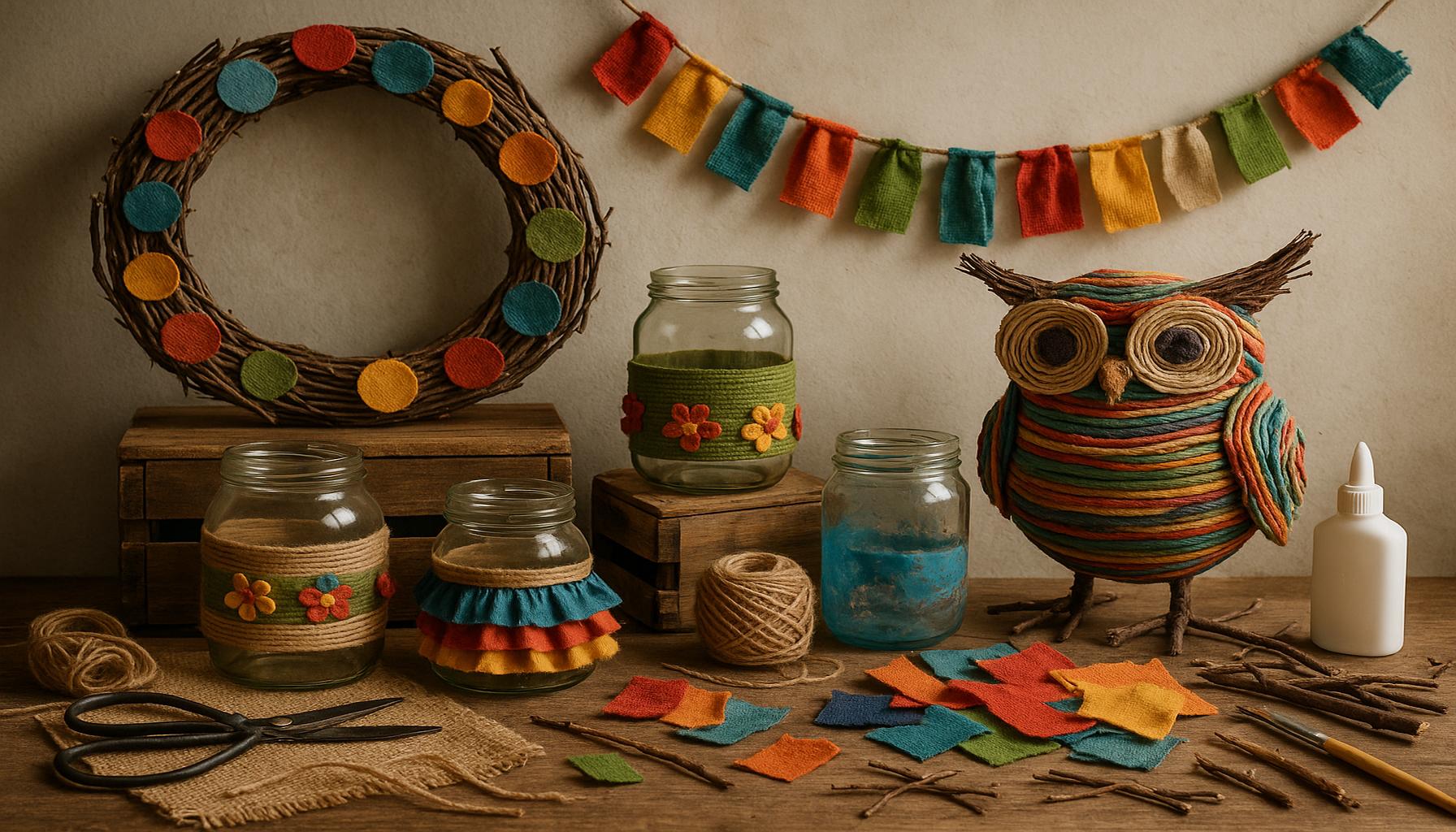Crafting Digital: Exploring the New Frontiers of Handicrafts with Technology

The Digital Transformation of Handicrafts
The world of handicrafts is undergoing a renaissance as it embraces the potent fusion of traditional craftsmanship and digital innovation. Artisans and hobbyists now have access to a plethora of digital tools that not only augment their creative processes but fundamentally transform how handmade goods are conceived and produced. Technologies such as 3D printing, laser cutting, and virtual reality are enabling creators to push the boundaries of their craftsmanship, paving the way for a revolution that respects the past while boldly stepping into the future.
Key Factors Driving the Change
- Accessibility: In the era of social media and e-commerce, platforms like Etsy, Pinterest, and Instagram allow creators to showcase their work to a global audience. This unprecedented access means that an artisan in a small town can garner attention—and sales—from patrons across the world.
- Innovation: The introduction of advanced tools has revolutionized craft production. For instance, 3D printing enables makers to produce intricate designs that would be nearly impossible to achieve by hand, bridging the gap between art and engineering. Similarly, laser cutting technology provides artisans with precise cuts and etchings, allowing for intricate details that enhance the aesthetic of their work.
- Education: The availability of online tutorials and courses through platforms like Skillshare and YouTube has democratized learning. Aspiring artisans can easily find resources to learn new techniques, experiment with different mediums, and refine their skills without the need for formal instruction.
This evolution reveals that technology is not merely a tool; it serves as a catalyst for a new wave of creativity. Artisans are not only integrating modern techniques into their crafts but are also redefining traditional methods. For example, a woodworker might combine hand-carving with laser-cut designs to create unique, hybrid pieces that stand out in the market. Textile artists are also seeing this transformation, using digital fabric printing techniques to produce intricate patterns that were once labor-intensive.
Across various crafts, the impact of technology is palpable. From woodworking to textile arts, artisans are exploring new avenues for expression and creativity. As we continue to witness this fascinating evolution, it becomes clear that the digital landscape is not just impacting the way crafts are created but is also fostering a vibrant community of makers who are rewriting the narrative of artisanal creation.
Embark on this journey to discover how the intersection of tradition and innovation is reimagining the art of handicrafts, encouraging you to explore the diverse and dynamic world of creators who are thriving in this digital age.
DIVE DEEPER: Click here to discover the mental health benefits of journaling

The Intersection of Tradition and Technology
As technology continues to evolve, so too does the landscape of handicrafts—a centuries-old practice that now finds itself at a unique crossroads. Artisans are harnessing the power of digital tools not just to enhance their craftsmanship but to disrupt traditional paradigms altogether. This intersection of tradition and technology is not merely a trend; it is a seismic shift that is redefining how craftspeople create, market, and connect with their audience.
Digital Fabrication as a Game Changer
Among the most revolutionary advancements in the world of handicrafts is the emergence of digital fabrication technology. This encompasses various processes such as 3D printing and laser cutting, which allow artisans to produce highly detailed and complex designs with unprecedented precision. Where once a craftsman may have spent hours, if not days, hand-carving intricate patterns, these digital tools can significantly cut down production time while enhancing the quality of the final product.
- 3D Printing: With the ability to create three-dimensional objects from a digital file, 3D printing has fundamentally altered the landscape of product design. Artisans can experiment with shapes and materials that would have been impractical to realize by hand, providing a rich canvas for creativity.
- Laser Cutting: This technology not only ensures precision but also opens the doors for personalization. From engraving unique messages on wood to producing intricate lace patterns in textiles, laser cutting empowers artisans to add a unique touch to their creations.
- Digital Embroidery: Incorporating software driven machines allows textile artists to produce complex designs and patterns that are both consistent and intricate, enabling them to fulfill larger orders without sacrificing artistry.
These technological advancements are not simply tools; they serve as a point of reinvention for artisans who aspire to keep pace with contemporary consumer demands. As generations continue to embrace the value of handcrafted goods, the ability to leverage advanced technologies becomes essential for staying competitive in a crowded marketplace. With platforms like MakerBot and Glowforge, creators can easily access these innovations without needing an engineering background, thus democratizing the production process.
Building Communities Around Digital Crafting
Furthermore, the digital transformation of handicrafts extends beyond mere production capabilities. It fosters a sense of community among makers. Online platforms and social media effectively dismantle geographical barriers, allowing artisans to share their journeys, techniques, and finished products. Websites such as Ravelry for knitters and Craftsy for various crafts facilitate connections between creators, enthusiasts, and customers alike, propelling discussions that bridge traditional methods and contemporary practices.
This community-driven approach not only inspires collaboration but also nurtures a spirit of continuous learning, encouraging artisans to explore new techniques and ideas. By participating in workshops or online forums, artisans can share insights gained from their experiments with technology, thereby collectively enriching the crafting landscape.
As we delve deeper into this exploration of digital craftsmanship, we uncover the remarkable ways in which traditional skills are being reshaped by technology, creating a vibrant marketplace filled with innovative creations that honor the past while embracing the limitless possibilities of the future.
| Category | Key Features |
|---|---|
| Online Marketplaces | Expand reach to global customers, minimizing overhead costs and enhancing exposure. |
| Digital Tools | Innovative software and applications help artisans design, plan, and create intricate pieces more efficiently. |
| Sustainability | Utilizing eco-friendly materials alongside digital processes supports the green revolution in crafting. |
| Community Building | Social media platforms connect craftsmen, creating a vibrant network for sharing ideas and inspiration. |
The intersection of technology and handicrafts paves the way for limitless possibilities. As artisans adopt cutting-edge techniques, they are not only enhancing their creativity but also forging stronger connections with a wider audience. For instance, the rise of online marketplaces allows crafters to showcase their talents globally, breaking geographical barriers that once limited their reach. This evolution is accompanied by an increasing focus on sustainability, with many turning to eco-friendly materials, thereby aligning their practices with the ethical values of modern consumers.Moreover, with digital tools like design software and 3D printing, artisans are exploring new dimensions in their creative processes. These innovations lead to intricate creations that were previously unattainable, adding a unique twist to traditional crafts. The craft community is also thriving on social media, where collaboration and support are just a click away, fueling a cultural renaissance in handicrafts.In this era, adapting to technological advancements is no longer optional; it’s essential for artisans who wish to survive and flourish in a rapidly changing marketplace. This blending of traditional craftsmanship and modern technology is not just preserving the art of creating; it is redefining it for future generations.
DIVE DEEPER: Click here to discover more
Innovative Marketing in the Digital Age
As artisans embrace technology in their creating processes, they also find new avenues for marketing and selling their works. The digital age has revolutionized the way handicrafters interact with consumers, leading to innovative strategies that go beyond traditional brick-and-mortar settings. With online marketplaces such as Etsy and Shopify, makers can showcase their products to a global audience, transcending geographic constraints.
Leveraging Social Media for Exposure
Social media platforms like Instagram and Pinterest have become vital tools for artisans. Not only do they allow for effective visual representation of crafts, but they also provide a platform for storytelling. Each post or story shared can narrate the unique process behind a handcrafted item, fostering a deeper connection between the artisan and the consumer. For instance, a craftsperson can post time-lapse videos of their work on YouTube, attracting followers who appreciate the artistry and effort involved.
- Instagram Business Accounts: Many artisans utilize Instagram’s shopping features, integrating their virtual storefront directly into their profiles. By creating visually appealing feeds, they draw in customers who are looking for unique, handmade products.
- Pinterest’s Visual Search: Visual search engines allow users to find products similar to their interests, driving traffic toward the artisans’ portfolios. The platform’s DIY spirit aligns perfectly with the crafting community, encouraging collaboration and inspiration.
- Online Workshops and Tutorials: Many creators have pivoted to offer their expertise online. By conducting workshops or creating instructional videos, they not only expand their brand’s reach but also engage consumers more deeply with their craft.
This newly acquired digital marketing prowess has made it possible for artisans to establish personal brands that resonate with consumers. As shoppers increasingly seek authenticity and personalization, digital storytelling provides an impactful way to stand out in a competitive market. Studies show that consumers are more likely to purchase when they feel a connection to the brand, making social media an invaluable resource for makers.
Embracing E-Commerce and Direct-to-Consumer Models
The rise of e-commerce solutions has made selling handmade products easier than ever. Direct-to-consumer (DTC) models empower artisans to set up their online stores without the need for intermediaries, allowing them to retain more profits. With tools like Shopify, WooCommerce, and Big Cartel, makers can easily design their store fronts, handle transactions, and manage inventory from the comfort of their home studio.
According to a report by the U.S. Small Business Administration, small businesses that adopt e-commerce have seen revenue increase by 30% on average. This suggests that the digital marketplace is not just an option but a necessity for artisans striving to thrive in today’s economy.
Furthermore, data analytics available through e-commerce platforms provide artisans valuable insights into consumer behavior. Understanding trends in customer preferences allows creators to tailor their offerings and stay ahead of market changes. By encompassing both production and marketing strategies, makers are forging a business model that champions creativity along with economic sustainability.
The combination of advanced technology and innovative marketing strategies is creating a vibrant ecosystem for artisans. The arts and crafts industry is undergoing unprecedented transformation, fueled by the inquisitiveness and adaptability of creators who stand ready to redefine the future of handicrafts with technology at their fingertips.
DIVE DEEPER: Click here to discover the evolution of digital art
Conclusion: The Future of Handicrafts in a Digital World
As we’ve explored, the integration of technology into the world of handicrafts is not merely an enhancement; it is a transformative movement that is redefining the entire crafting landscape. Artisans are harnessing digital tools to streamline their creation processes, expand their customer base, and actively participate in a rapidly changing marketplace. With the ability to sell globally via e-commerce platforms, artisans can now reach consumers who seek unique, handmade products from various corners of the world.
The power of social media cannot be overstated in this new paradigm. Visual storytelling through platforms like Instagram and Pinterest has become essential, enabling makers to cultivate personal brands that resonate deeply with customers. By sharing their creative journeys, artisans forge connections that go beyond transactions, fostering loyalty and authenticity in a competitive market.
Looking ahead, as the divide between traditional handicrafts and modern technology continues to blur, the potential for innovation will only expand. Artisans who embrace these tools and trends will not only enhance their craft but also contribute to a thriving ecosystem that celebrates creativity, sustainability, and community. The future of handicrafting is indeed digital, and it promises a rich tapestry of creativity and connection.
In conclusion, the exploration of this new frontier signifies a significant shift, encouraging artisans to not only adapt but also thrive. As we witness this unfolding narrative, it invites enthusiasts and creators alike to engage with the emerging possibilities and discover how technology can be beautifully intertwined with tradition in the art of crafting.


